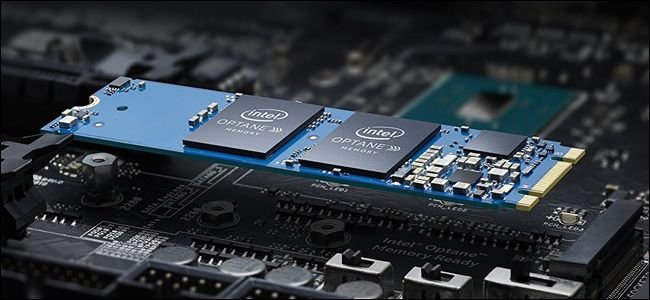Optane Memory, the new Intel technology explained in simple terms
Are you still not able to figure out, what is Optane Memory? How is it different from conventional RAM? Why Intel developed Optane? The article given below explains everything about Intel Optane Memory.
Pre-requisite terms:
1. Latency
In layman’s terms, The total time a message needs to travel in the whole system or network is latency.
2. Flash memory
You may saw the term ‘Flash Memory while buying USBs, Memory cards, or even Hard disks. However just because it was none of your business, you bought it blindly. So, Flash memory is a type of solid-state electronic memory that is non-volatile. It can be programmed, erased, and reprogrammed. The flash memory mainly comprised of two types i.e. NOR (NOT-OR) & NAND (NOT-AND)
3. NAND Flash
The USBs, memory cards, and solid-state drives are the devices with NAND Flash memory. These memories can read, write, and erase contents in the form of blocks. These blocks are much smaller in size containing the data in the form of binary codes (1s or 0s). The storage of data in the absence of any power source is possible due to the semiconductor material. This material used in the electric circuit is known as the floating gate transistors.
Several electric circuits connected like a NAND gate connection which behaves opposite of AND gate. So when we supply power, all NAND gate bits get high, and floating-point transistors get deactivated. As a result of which, data gets retained as the power supply is on. On the other hand, when the same power supply gets cut, the NAND gate connection bits get low and charges get activated which can store the data even without the power.
4. NOR Flash
It is a code storage memory in which the instruction sets are stored, This flash type allows only single word (byte) writing to an erased location, The electric circuits are not connected, instead, each instruction has its circuit as different instructions call for different system operations like a boot, Basic-Input-output-service(BIOS). Depending upon the instructions called, the low bits are activated for the operations.
5. 3D NAND Fabrication
Memory chips are made from silicon. The process of conversion is called fabrication. The memory chips now fabricated in 3 dimensions unlike the conventional way of connecting the memory cells in 2 dimensions. The process involves connecting the memory cells vertically so that in that limited space. A huge amount of memory chips can be connected in the form of layers.
For example, suppose A, B, C are three sisters who love books, now there is only one drawer available for all of them. Only 3 books can be stored horizontally, so they decided to divide the same drawer into 3 sub drawers and now they can store 9 books altogether.
OPTANE: THE NEW UPGRADE IN INTEL TECHNOLOGIES
Intel introduced an innovation known as the Optane memory, with the launch of 7th generation Intel core processors. This is not a conventional ROM or RAM which implemented the NOR/NAND flash. It is a bridge between primary and secondary memory. You may now think about how it is different from a cache memory? Optane is a cache memory with the upgraded technology known as 3D Xpoint technology embedded with the Intel Rapid Storage Technology. About 128 billion memory cells are densely packed together resulting in fast-changing resistance which is a new base for storage of bits.
Why it was introduced? What were the results?
The main objective behind this technology is to reduce the latency time. Intel has tried to minimize the latency time to almost 10 microseconds. Optane memory uses the LRU Least Recently Used approach while caching the data due to which the most used data can be loaded as fast as possible. Because of Optane speed, more than 5-6 GBs data can be cached at one go leading to fast boot time and frequent data access the fastest. Currently, 16GB and 32GB variants are available in the market.
Conclusion
3D XPoint also implements the 3D NAND Fabrication speeding up the overall performance by 28% but only with one complication, requires the M.2-slots in motherboards. Optane can perform better than SSD but every time, SSD gives a tough competition to it. Taking into consideration the drawbacks, it only supports the primary OS drive partition which sometimes is not a great deal as secondary storage speed cannot be improved.
Difference between Optane memory, Hard disk & SSD
There are several key differences between Intel Optane memory, hard disk drives (HDD), and solid-state drives (SSD):
- Memory technology: Intel Optane memory uses 3D XPoint technology, which is a type of non-volatile memory that is faster and more durable than traditional NAND-based SSDs. HDDs, on the other hand, use magnetic disks to store data, while SSDs use NAND flash memory.
- Performance: Optane memory is significantly faster than both HDDs and SSDs when it comes to random access and low queue depth operations. In contrast, HDDs have much slower read and write speeds, while SSDs are faster than HDDs but not as fast as Optane memory.
- Capacity: Optane memory has relatively low capacity compared to both HDDs and SSDs, it is designed to be used as a cache memory to accelerate the performance of the primary storage device. HDDs have the largest capacity of the three but also the slowest performance. SSDs have a moderate capacity and a good balance between performance and price.
- Durability: Optane memory is more durable than both HDDs and SSDs as it is not sensitive to physical shock and vibration. HDDs, on the other hand, are sensitive to physical damage and can be easily damaged if dropped or bumped. SSDs are also more durable than HDDs but not as durable as Optane memory.
- Cost: Optane memory is generally more expensive than both HDDs and SSDs, as the technology is still relatively new. HDDs are the most affordable of the three, while SSDs are more expensive than HDDs but less expensive than Optane memory.
In summary, Intel Optane memory is a high-performance, non-volatile memory that is well suited for use as a cache memory to accelerate the performance of primary storage device like hard disk drive or SSD. It uses 3D XPoint technology which is faster and more durable than traditional storage options like HDDs and SSDs.
Would you like to know about a free cybersecurity tool, Complete tutorial is here
3 thoughts on “Optane Memory, the new Intel technology explained in simple terms”
You must be logged in to post a comment.


[…] lethal combination of SSD and HDD that has Optane-enabled technology has a strong advantage. Generally SSDs have a short life and it easily get damaged through various […]
[…] lethal combination of SSD and HDD that has Optane-enabled technology has a strong advantage. Generally SSDs have a short life and it easily get damaged through various […]
[…] lethal combination of SSD and HDD that has Optane-enabled technology has a strong advantage. Generally SSDs have a short life and it easily get damaged through various […]